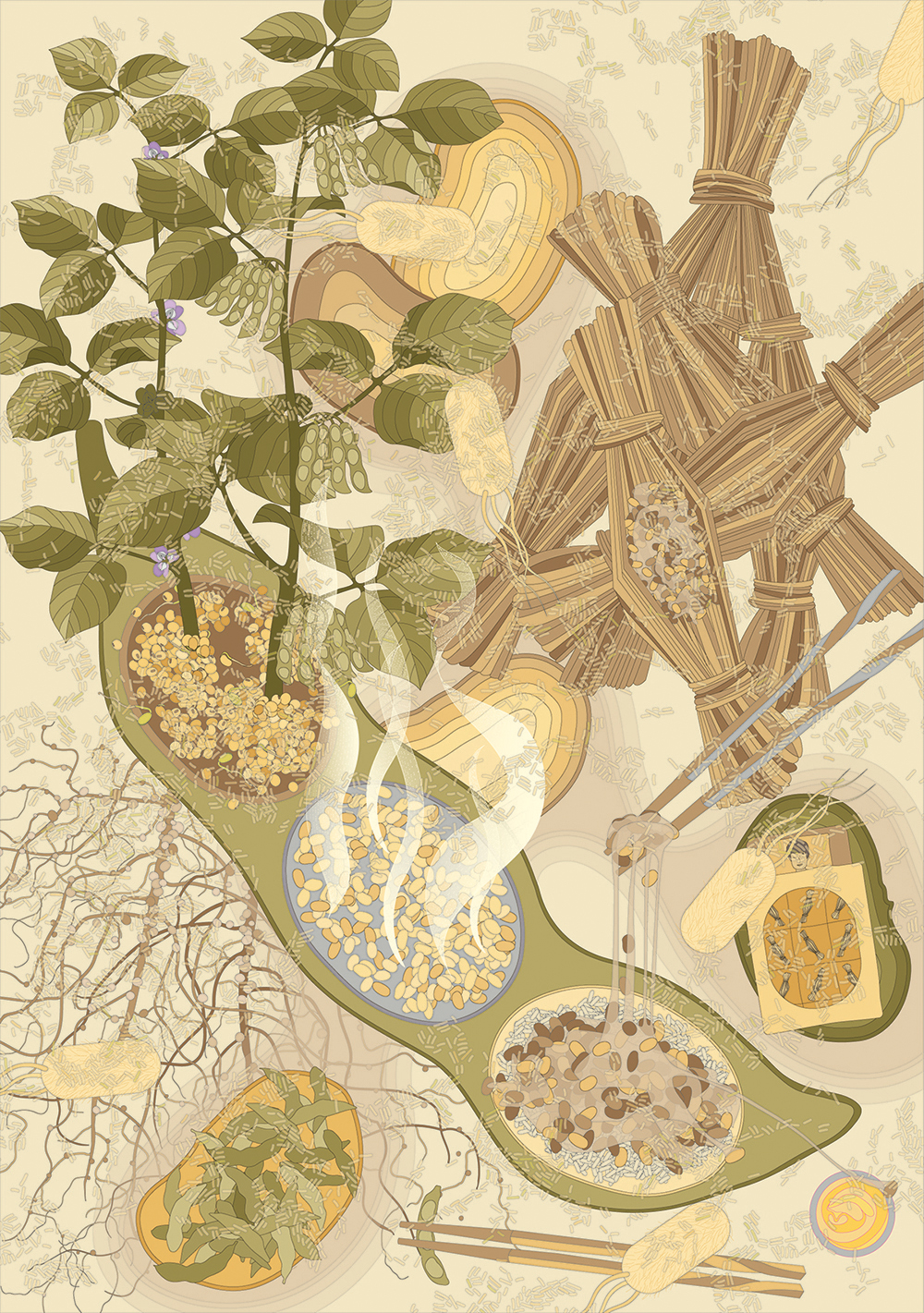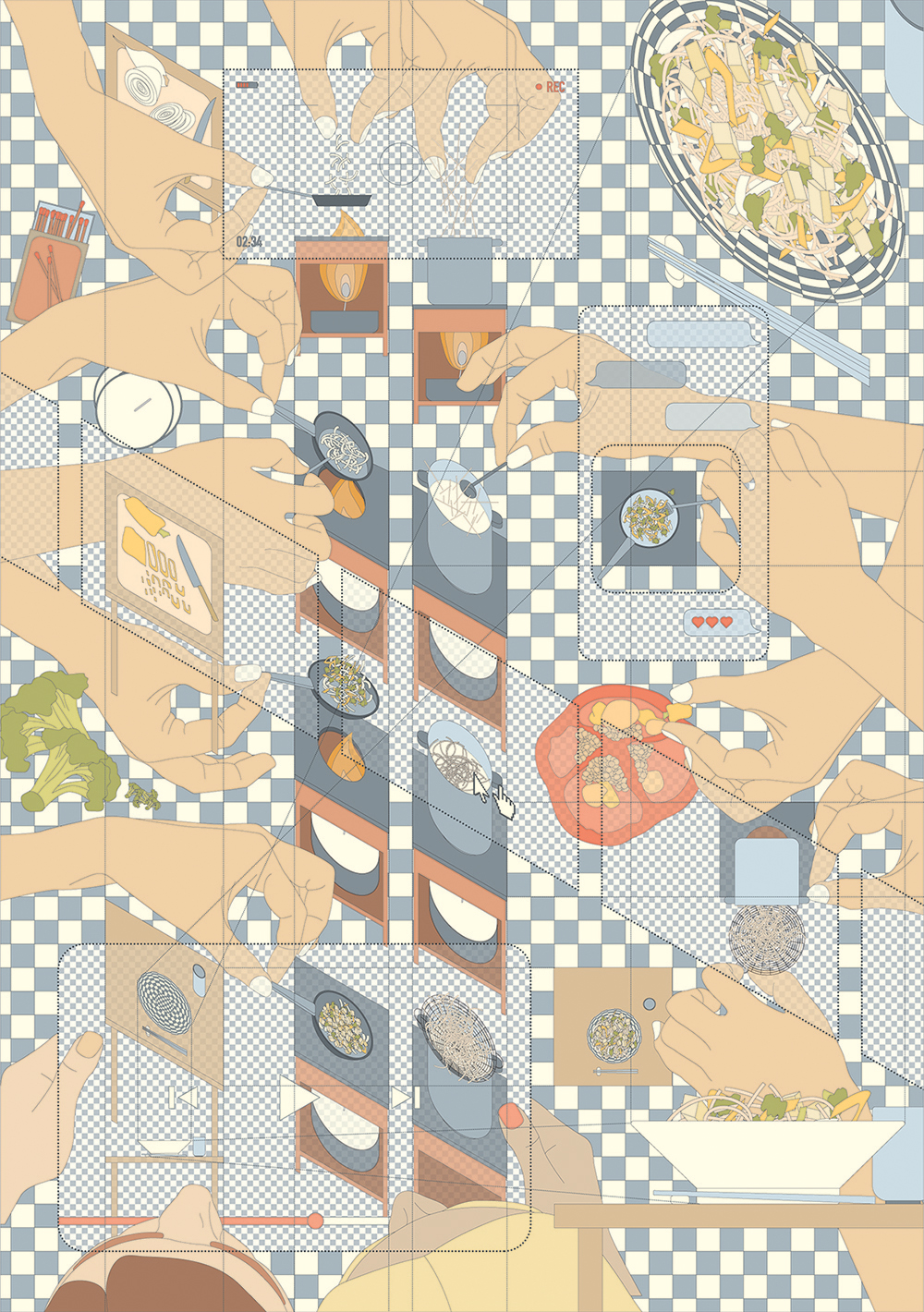Drawing Kitchens Together
research paper, series of three drawings and fabulative recipes \ 2020—ongoing
publication for Room Journal no.2 “The Kitchen” (forthcoming)
with Contingent Collective \ collaborators: Roy Cloutier, Nicole Sylvia
Perhaps more than any other conventional room, kitchens form a link between domesticity and larger networks. Everyday kitchen activities implicate us in multifarious webs of relation—from patterns of sociality to multispecies ecosystems, from molecular accumulations to global exchanges. Acting both as a separating membrane and an infrastructural platform, the kitchen becomes an orifice through which this relation flows—consuming, preparing, regulating, excreting.
What does the kitchen look like when we approach it as a site of conviviality and multispecies becoming? How can its surfaces act as meters of relation, of accumulation, and of entanglement? How might its interfaces (biochemical, technological, social) channel relation or create novel interconnections? Ultimately, kitchens might act as a site for us to cook up new ways of working—new understandings of collective production. In this spirit, the three narrative-drawings of Too Many Cooks seek to provide new ways of understanding what constitutes the space, activities, and even the idea of the kitchen—and to do so in a manner more generous to relations of embeddedness and collective production.
“Bacterial Becomings: Making Kin with Nattō” follows the webs of microbial partnerships vital to the processes of growing, fermenting and digesting the soybean-based dish nattō. In doing so it works to expand our understanding of the space of the kitchen and the act of cooking across species, scales, and temporal frames. It calls on us to reconsider our separation from both the kitchen and its subjects—after all, are the bacteria that ferment nattō ingredients, cooks, or both?
“Commensal Helpings: Many Hand Pizza” foregrounds the kitchen as a space of convivial encounter and a key site of the process of commoning. It traces the interactions and relations that form the collective preparation and sharing of meals—in this case, the preparation of pizza and pastas that are too large to be kneaded (or, for that matter, eaten) alone. These collective meals are the polar opposite of something like a TV dinner that reduces the act of cooking and eating to an isolated, individualistic minimum of convenience—instead, highlighting how preparing food is not only produced by relations between individuals, but also in turn produces relations between them.
“Food for Reel: Bite-Sized Stir-Fry” maps the assemblage of instruments involved in staging, recording and relaying miniaturized yet larger-than-life culinary performances, recasting the kitchen across tactile matter and digital media. In these videos much as in the omnipresent posting and sharing of food images on social media, the kitchen and the decisions made in it become enmeshed within a web of relation that is global in scale. These digital simulacra of the kitchen link individuals via admiration, imitation, empathic connection, humor, and more. The kitchen becomes a performance space, and the act of cooking a show—in turn opening both up to new forms of relationality.



